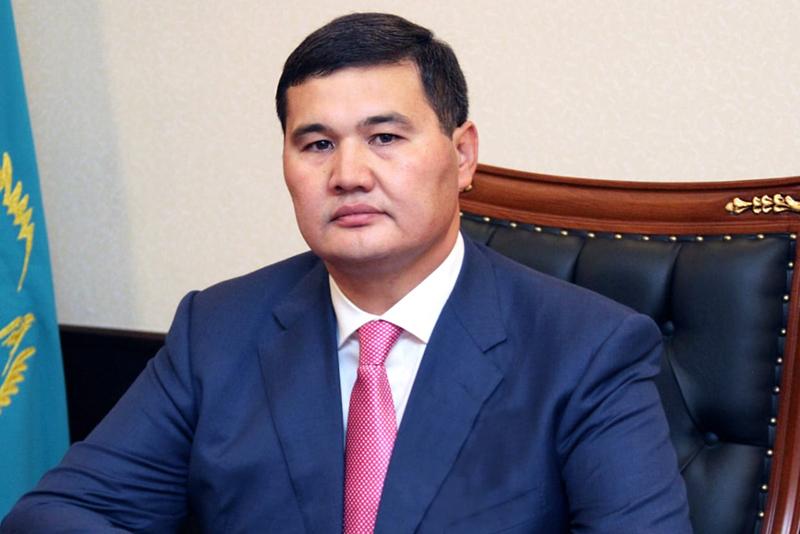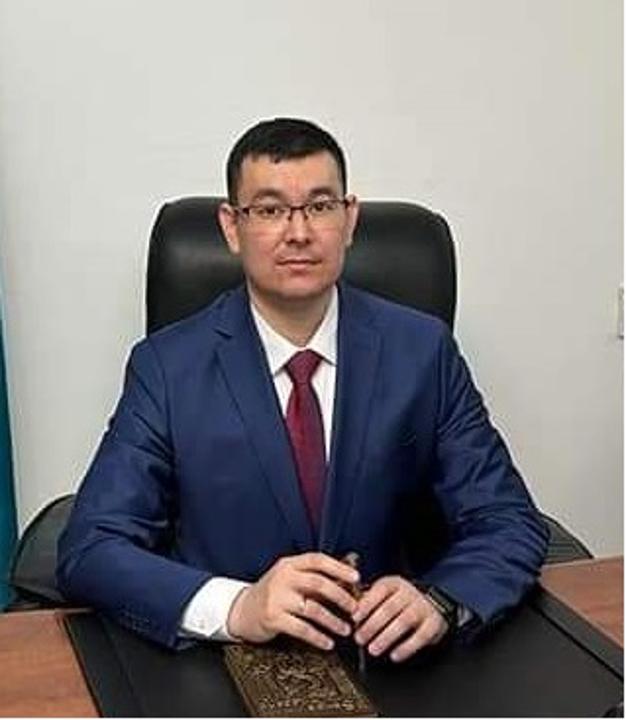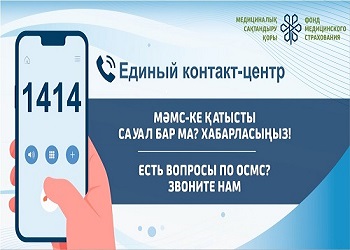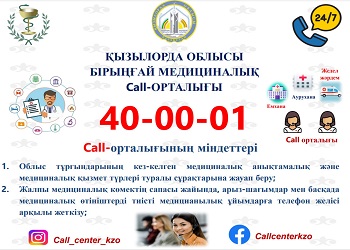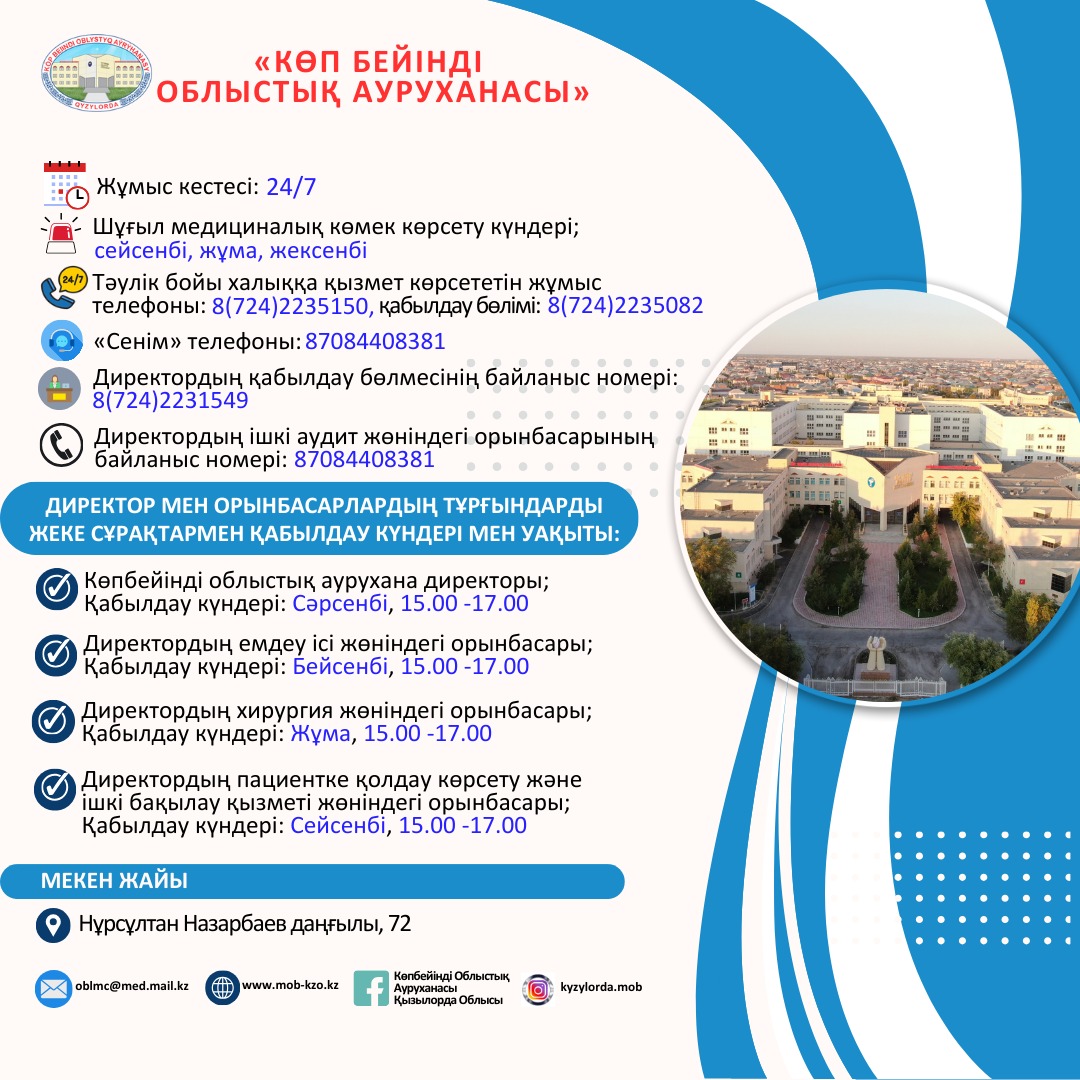DEPARTMENT OF NEUROSURGERY
Orazmahanuly Shynzhyrbay
Head of Department
Highest category doctor
The department provides planned and emergency highly specialized and specialized assistance to the population of the multidisciplinary regional hospital, as well as districts of the Kyzylorda region. The department is deployed on 35 beds, of which 5 beds are for neurorehabilitation of patients after undergoing neurosurgical interventions.
The main directions in the development of the neurosurgical service of our department are neuro-oncology, cerebrovascular pathology, degenerative diseases and spinal injuries, and CNS pathology. When planning any operation, the priority for each case are minimally invasive techniques. This is achieved by planning the minimum-optimal access through which it is possible to carry out the main stage, without causing harm to the surrounding tissues.
On the basis of the neurosurgical department, operations are carried out for the treatment of hemorrhagic strokes, degenerative diseases and spinal injuries at all levels, injuries of the CNS and peripheral nervous system, intracerebral inflammatory complications, as well as in the field of neurooncology. There is close cooperation with the Departments of Neurosurgery of the State Institute of Astronomical Medicine and the Republican Scientific and Practical Scientific Center of Astana, the Department of Neurosurgery at the Karaganda Medical Center, the Institute of Neurosurgery named after L.Polenov, St. Petersburg, and the Institute of Neurosurgery named after N. Burdenko, Moscow.
Types of medical care:
1. Emergency neurosurgical care (surgical and conservative) for victims with isolated and concomitant traumatic brain injury.
- Brain concussion
- Brain injuries
- Fractures of the fornix and skull base
- Intracranial hematomas (craniotomy)
- Gunshot wounds to the head
- Surgical treatment of patients with post-traumatic defects of the skull (plastic of the skull defects)
2. Spinal neurosurgery:
1. Microsurgical technologies in the pathology of the spinal cord and spine
2. Stabilizing surgery for degenerative lesions of the spine
3. Microsurgical removal of spinal cord and spinal mass
4. Vertebroplasty, kyphoplasty in spinal pathology
5. Microsurgical removal of the intervertebral spinal discs
6. Prosthetic intervertebral discs
7. Transpedicular spinal fixation
8. Dynamic stabilization of the spine.
3. Neuro - oncology:
- basal meningiomas of various localization and distribution;
- Neurone VIII nerve;
- brain gliomas GI - GIV;
- hydrocephalus of various etiologies;
- arachnoid and other cysts of the brain.
- secondary brain tumors.
- tumors of the bones of the base and calvarium.
- Tumors MMU.
4. Vascular neurosurgery:
1. Endovascular treatment for cerebral aneurysms (microspirals, remodeling using a balloon or stent)
2. Microsurgical excision of vascular anomalies (arteriovenous malformations, arteriovenous fistulas)
3. Endovascular embolization of vascular pathologies (arteriovenous malformations, arteriovenous fistulas) glue components
5. Neurorehabilitation beds provides specialized, restorative treatment for patients with neurosurgical pathology:
the consequences of severe traumatic brain injury, the effects of spinal cord injury and injury to the peripheral nervous system, as well as after neurosurgical surgery.
The complex of rehabilitation treatment includes:
- group and individual lessons with physiotherapy instructors;
- mechanotherapy;
- classes with speech therapist for speech disorders;
- acupuncture;
- physiotherapy (magnet therapy, laser therapy, electrostimulation, hydromassage, pearl baths, 4-chamber galvanized, 4-chamber jet-contrast bath, Charcot's shower, circular shower, etc.);
- massage;
- hydrokinesitherapy;
- drug treatment;
This complex of medical measures is aimed at the full or partial restoration of impaired functions, self-service training, the restoration of work.
A feature of the work is an individual approach to the preparation and implementation of a rehabilitation program for the treatment of each patient,
high qualification and friendly attitude of the staff.
Field Advisory Neurosurgical Team
The neurosurgical advisory mobile team works in conjunction with the Sanaviation department.
The main tasks of the brigade are:
1. Providing round-the-clock advisory and curative care to patients with urgent neurosurgical diseases, severe craniocerebral
trauma, complicated spinal fractures, diseases of the spine and spinal cord.
2. In accordance with the tasks assigned to the team assigned the following functions:
• conducting a special examination (echoencephaloscopy, craniography, etc.), providing the patient with the necessary medical care at the site consultations and during transportation;
• determination of indications for transfer and transfer of the patient to the specialized neurosurgical department in accordance with the existing disease;
• according to indications of neurosurgical operations in medical and preventive treatment institutions at the place of consultation at non-transportable patient.
To perform these tasks, the exit neurosurgical team has an AN-2 aircraft, a Wolksvagen and Hyundai car, which is equipped with a portable
echoencephaloscope, operating magnifier with illuminator, a set of neurosurgical instruments.
Department equipment
All operations are carried out under the control of a modern microscope from leading world manufacturers (Karl Zeis; Karl Storz, Germany), an electron-optical converter (Siemens, USA); high-frequency and plasma coagulator, ultrasonic suction (Soring, Germany); microsurgical instruments and high-speed drill (Aesculap, Germany).
For reconstructive stabilizing operations in spinal pathology, medical products from leading global manufacturers are used (De Puy J & J, USA; Metronic, USA; Stryker, USA; B. Braun-Aesculap, Germany): PLIF-, TLIF-, VLIF systems - cage ; systems of transpedicular fixation, including percutaneous; rear interspin dynamic stabilization systems - DIAM; trans-articular fixation systems, confidence systems and other vertebroplasty systems.
Branch facilities
Patients are treated according to the principles of minimal invasiveness, minimal trauma and respect for the tissues of the brain and spinal cord. In our practice, we use only the most modern equipment. This allows us to significantly improve the accuracy of fixing systems, perform intraoperative control, it allows the patient to return to a full life in earlier periods. Most of the surgical interventions performed in the department belong to high-tech neurosurgical operations of high complexity.
Our contacts:
+7 (7242) 23-51-50
+7 (7242) 23-52-78
+7 (7242) 23-51-96
internal numbers 163, 114, 218




